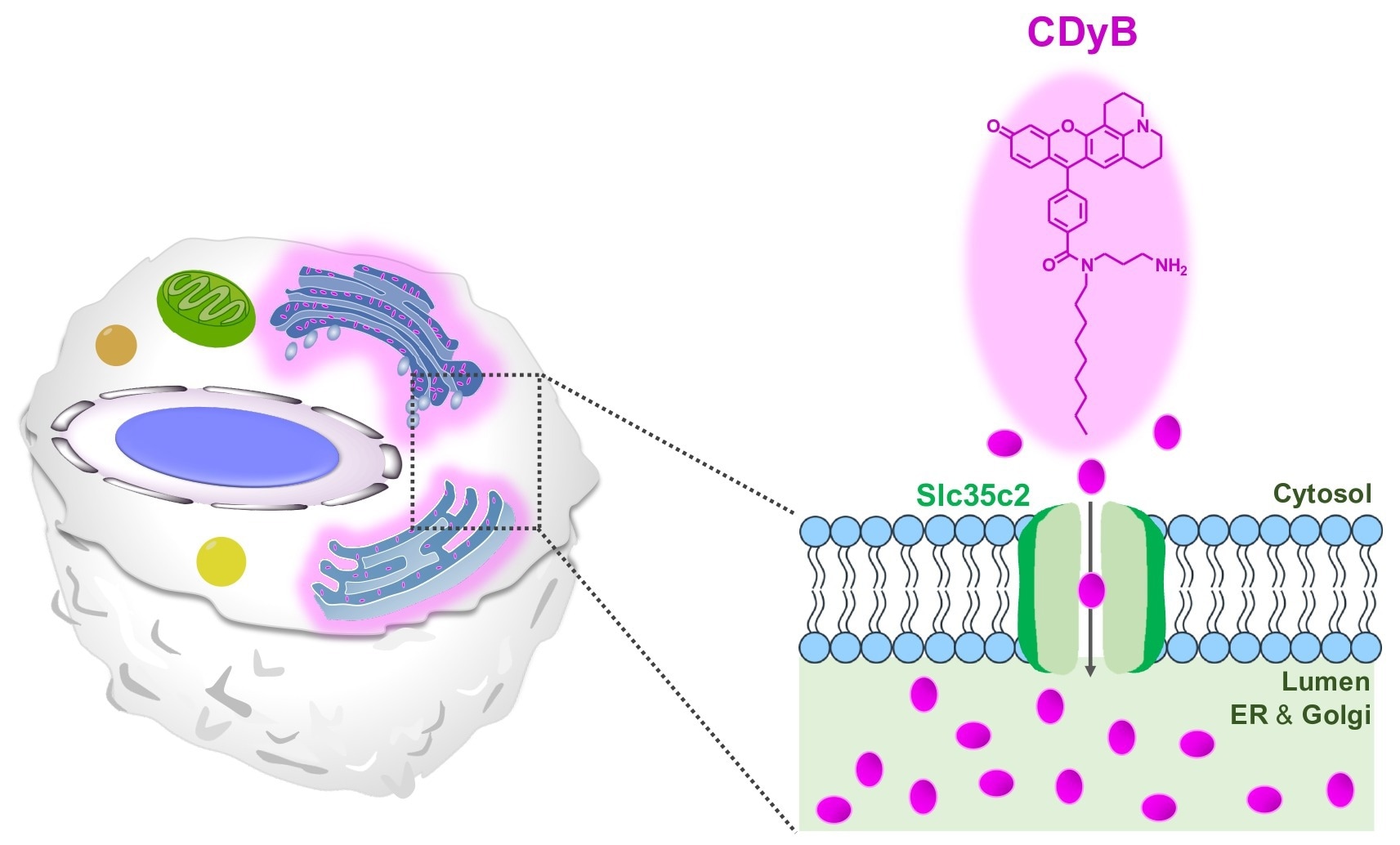The human body is regularly exposed to bacteria, parasites, viruses, and other pathogens, making the immune system vital for survival. Humans would quickly lose the battle against these pathogens and fall victim to these outside invaders in the absence of an immune system.
 The proposed staining mechanism of CDyB. Image Credit: Institute for Basic Science.
The proposed staining mechanism of CDyB. Image Credit: Institute for Basic Science.
White blood cells, which make up the immune system in their billions, travel through the bloodstream and tissues as they search for indications of infection or tissue damage. White blood cells of many different types, such as lymphocytes, monocytes, and granulocytes, make up the body’s defenses. T cells, B cells, and NK cells are further subdivided from lymphocytes.
Understanding each cell type’s unique functions and conducting immunology research requires accurate cell type identification. Two important adaptive immune cells in defense mechanisms are T and B lymphocytes.
However, it is difficult to distinguish between the cells due to their similar size and shape. Currently, different clusters of differentiation (CD) receptors on the cell surface are recognized by fluorescent antibodies, which stain cells to identify different cell types.
A small molecule probe called CDyB, which stands for Compound of Designation yellow for B cell, has now been efficaciously created by a group under the direction of Professor Young-Tae Chang at the Center for Self-assembly and Complexity within the Institute for Basic Science in Pohang, South Korea.
CDyB allows live B cells to be distinguished from T cells. The Diversity Oriented Fluorescence Library, or DOFL, an unbiased fluorescence library screening method, was used to find CDyB. The procedure allowed scientists to screen thousands of molecules for their specificity for one type of immune cell over another. This new probe was discovered to have high selectivity toward B cells when used on a mixture of T and B cells.
A novel type of probe called CDyB can distinguish between various cell types without the aid of CD-specific antibodies. Instead, it was discovered to be capable of entering the cell and staining the Golgi apparatus and endoplasmic reticulum (ER), which are significant organelles within the cells and are in charge of transporting materials within the cells. The molecule’s ease of passage through cell membranes is thought to make this possible.
The team discovered that the mechanism underlying the selectivity of B cells is based on gating after uncovering that CDyB is localized within the ER/Golgi organelles. To put it another way, some transporter molecules must be in charge of some cells’ ability to take in and accumulate CDyB inside organelles while not doing so in other cells.
In order to describe this recently discovered method of differentiating between various cell types, they created the new term, gating-oriented live-cell distinction (GOLD).
The next step was to determine why CDyB stained only the organelles of B cells but not T cells. Utilizing SLC-CRISPR-based library, which is a platform that provides a strong probability of systematic gating target elucidation, the investigators further researched the mechanism of the new probe.
The researchers found that SLC35C2 was the transporter particular for CDyB, allowing the molecule to be transported inside the organelles, by using SLC-CRISPRa and SLC-CRISPRi. The analysis of gene expression further confirmed the target transporter’s existence.
The role of SlC35C2 for the B cell selectivity was demonstrated by the researchers’ additional knockout experiments, which revealed that deleting the transporter prevented the molecule from being internalized by the target cells’ ER or Golgi.
Intriguingly, the researchers found that mature B cells displayed a stronger CDyB signal than did immature B cells. This is most likely caused by the expression of SLC35C increasing as the B cells mature.
SLC35C2 is only weakly expressed by progenitor cells like hematopoietic stem cells (HSC) and common lymphoid progenitor (CLP), which results in minimal CDyB staining. The expression of SLC35C2 remains low as they differentiate into T and NK cells, resulting in weak CDyB fluorescence.
During the maturation process, SLC35C2 expression rises if the cells divide into B cell lineages. The fully matured B cells show the highest level of CDyB fluorescence, followed by the partially differentiated B-cell progenitors (Pre-Pro B, Pro B, and Pre B).
Notably, last year Professor Chang’s team discovered CDgB (Compound of Designation green for B Cells), another B-cell-specific probe.
In contrast to CDyB, it uses the Lipid-Oriented Live-cell Distinction (LOLD) mechanism to distinguish B cells from T cells. For cell discrimination, LOLD makes use of the slight variations in membrane elements, such as cholesterol content and carbon chain length.
In contrast to CDyB, which fluoresced more intensely in mature B cells, CDgB, which has a softer membrane structure, stained brightest in immature B cells. It is hoped that by combining both of these molecules and mechanisms, it will be possible to distinguish between various blood cell types.
This study expands the arsenal of molecular probes available for live B cell differentiation and molecular understanding, and it creates a new window of opportunity for multidimensional cell analysis based on an orthogonal mechanism.
Source:
Journal reference:
Gao, M., et al. (2022) A SLC35C2 Transporter-Targeting Fluorescent Probe for the Selective Detection of B Lymphocytes Identified by SLC-CRISPRi and Unbiased Fluorescence Library Screening. Angewandte Chemie. doi.org/10.1002/anie.202202095.